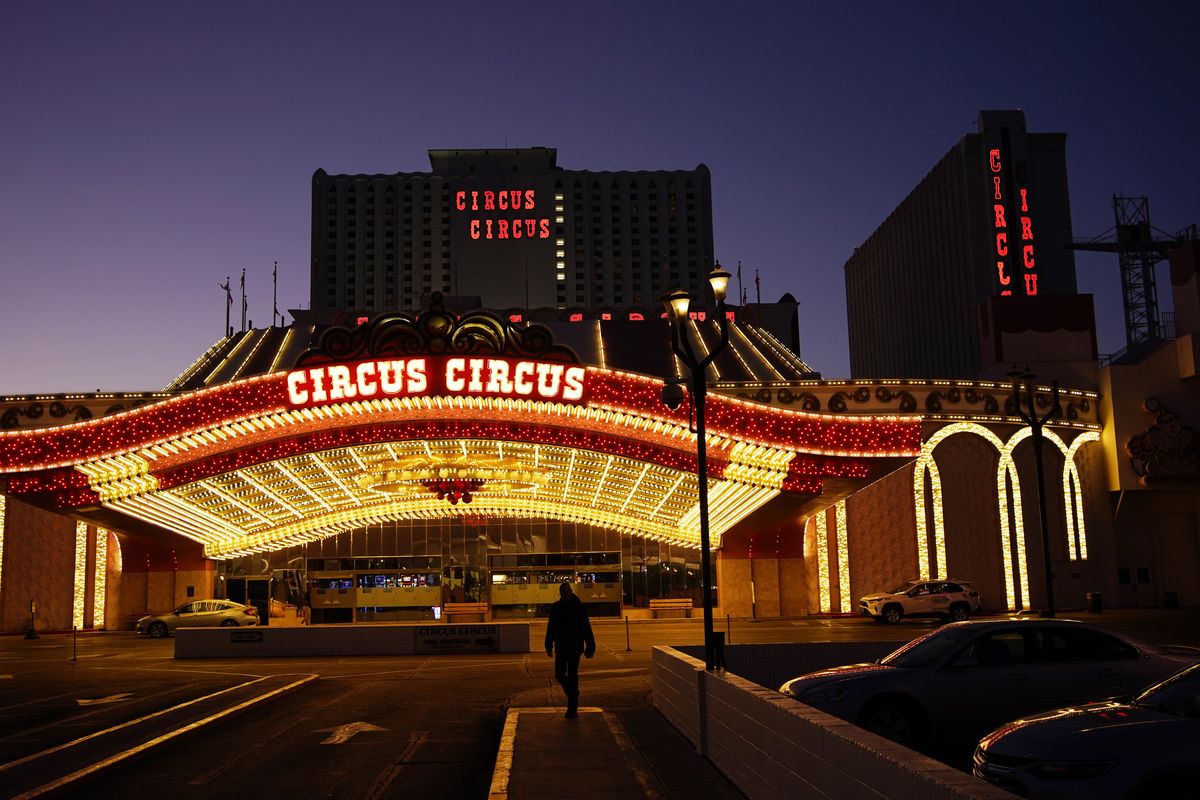Viral Vegas: Deaths jump, tourism slumps amid long pandemic

LAS VEGAS – Six weeks ago, thousands of New Year’s revelers gathered beneath the neon-lit marquees on the Las Vegas Strip – even though the big annual fireworks show was called off due to the coronavirus pandemic.
The sight of the big crowd, including many people without masks, spurred fears that COVID-19 infections would skyrocket, followed by hospitalizations and then deaths. That’s exactly what happened. January was Nevada’s deadliest month since the pandemic began, with 1,132 deaths. December was second.
Now the virus is reshaping a tourist destination built for excess and known for bright lights, big crowds, indulgent meals and headline shows. Visitors arrive to find some freedoms curtailed and some familiar attractions closed, but parking and bargain prices are abundant. Big performances and conventions are still on hold.
“We have an industry that invites people from all over the world to come here, and unfortunately when they come here, they can bring disease with them,” said Brian Labus, a longtime epidemiologist at the regional Southern Nevada Health District who now teaches public health at the University of Nevada at Las Vegas. “The concern is that it spreads within our local population.”
In mid-January, more than half of the hospitals in and around Las Vegas reported being at least 90% full. One suburban medical center declared a capacity crisis, with more patients than beds. Nearly half of its 147 beds were occupied by coronavirus patients.
Deaths in Nevada hit a single-day record of 71 on Jan. 21. On Thursday, the statewide death total from COVID-19 was 4,637 since the pandemic began.
As in other cities, some overwhelmed funeral homes have used refrigerated trailers to hold the dead, interim Coroner Michael Murphy said.
“It’s nothing like I ever experienced in my nursing career,” said Dina Armstrong, a nurse at MountainView Hospital in northwest Las Vegas. “Dealing with this disease is mind-blowing – the stress and the environment.”
On the streets, the result is many fewer tourists and “a very different experience,” said Marilinda Sepulveda, a repeat visitor, as she and her husband waited to snap photos next to the “Welcome to Las Vegas” sign.
The couple from Mission, Texas, spent two nights at the Cosmopolitan hotel in the heart of the Strip. “The nightlife is: You gamble, you walk, you go to your room,” Sepulveda said.
Speaking through a cloth face mask, her husband, Ozzy Benavidez, said they would have gone to magic shows and restaurants. Instead, the pair bought take-out meals and ate in their room.
Some marquee properties have been idled, including the Mirage casino and its iconic man-made volcano eruptions on the Strip.
Others, like the Wynn Resorts property Encore, are closed during the week but open on weekends. Unused convention space in the sleek curved 2,700-room tower was repurposed as a vaccination center operated by the region’s public hospital. Nearly 11,500 people have gotten shots there.
At the Las Vegas Convention Center, where a huge new wing was expected to open in time for the big Consumer Electronics gadget show in early January, officials opened a facility for people receiving their second dose of vaccine. CES was held virtually.
Up and down the Strip, from the renovated Sahara to the gleaming gold-windowed Mandalay Bay, visitors have found quiet gambling floors, shuttered showrooms and inexpensive rates.
Daniel Pangau, pastor of an Indonesian Christian church in Brea, California, figured a three-day stay at the Delano hotel for his family of six cost less than half the price before the pandemic.
Tourists find plentiful parking and signs everywhere reminding them to wear masks. They don’t see the thousands of workers still without jobs.
When casinos closed in mid-March, 98% of the 60,000 members of the local culinary and bartenders’ unions were furloughed. Union spokeswoman Bethany Khan said only about half are back to work now.
At least 115 union members and immediate family members have died from COVID-19, and almost 2,000 have been hospitalized with the virus since March, Khan said.
Unemployment in Nevada shot up from an all-time low of 3.6% in February 2020 to a worst-in-the-nation record 30.1% in April. The figure was down to 9.2% in December.
From mid-March to Jan. 30, more than 834,000 people filed first-time claims for jobless benefits, according to the state jobless office. That figure is especially startling when weighed against the size of the entire statewide workforce a year ago – 1.4 million people.
Visitor numbers were down by more than half in 2020 – just 19 million – compared with 42.5 million in 2019, according to data compiled by tourism, airport and gambling regulators.
Casino tax revenues, a key source of funds in a state with no personal income tax, were down 40% during the calendar year, gambling regulators reported.
Big conventions stopped completely in March and have not resumed. Democratic Gov. Steve Sisolak let casinos reopen in June with pandemic crowd restrictions. In November, he instituted what he termed a “pause” in reopenings.
Citing progress against the virus, the governor on Thursday announced that restrictions on businesses and gatherings could be loosened over the next three months.
Casinos, gyms, bars and restaurants will increase from 25% to 35% capacity beginning Monday, with seating limits, mask mandates and social distancing required. Casinos could go to 50% capacity next month. Clubs and nightclubs remain closed.
By the time shows resume, some veteran performers may be gone, said Alan Feldman, a longtime casino executive who is now a fellow at the International Gaming Institute at the University of Nevada, Las Vegas.
“One toll yet to be measured is the loss of talent,” Feldman said. “To what extent have people moved on to other careers or back to school or out of the state? That’s yet to be determined.”